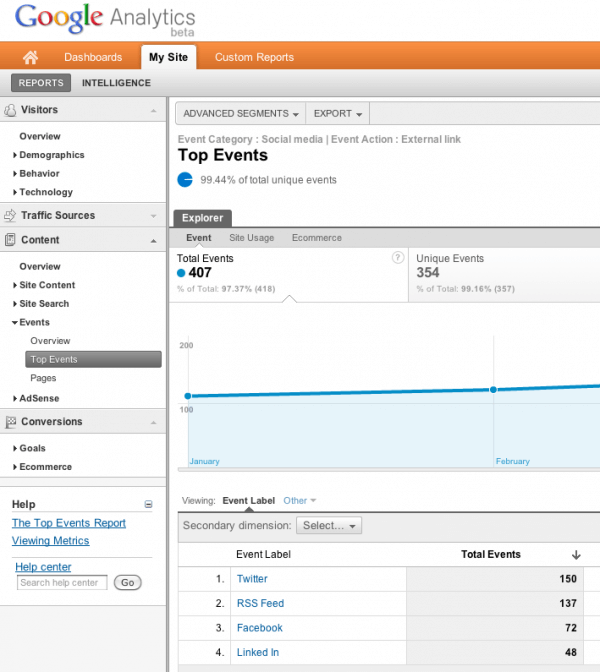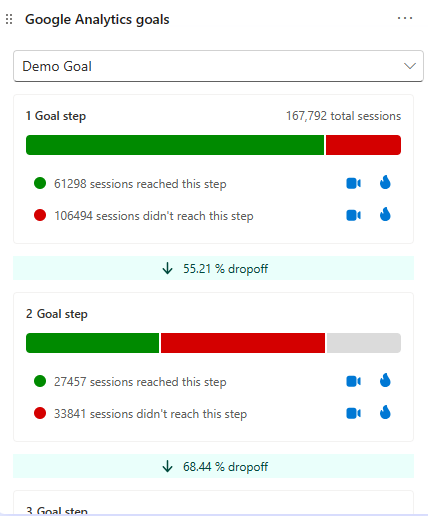Discover What Data Is Google Analytics Goals Unable to Track
Discover What Data Is Google Analytics Goals Unable to Track
Blog Article
Debunking Google Analytics Limitations: Discover What Information Goals Can not Track
In the realm of electronic analytics, Google Analytics stands as an effective tool that supplies beneficial insights right into web site performance and user behavior. From the intricacies of individual interaction with dynamic content to the complexities of cross-device user journeys, these constraints dropped light on locations that might stay obscured from traditional analytics point of views.

User Communication With Dynamic Material
User interaction with vibrant material plays a crucial duty in recognizing user actions on sites and optimizing the general customer experience. Dynamic content refers to aspects on a page that can transform without the need for a full page reload. This includes interactive elements such as pop-ups, sliders, types, and videos that reply to individual actions in real-time. By tracking customer communications with vibrant web content, web site owners can obtain valuable understandings right into customer engagement, preferences, and actions.
Google Analytics provides different devices to track customer communications with dynamic content, such as event tracking and online pageviews. Occasion monitoring allows you to keep track of details customer activities, like clicking a switch or seeing a video clip, offering information on exactly how users connect with vibrant components. Online pageviews can be utilized to track interactions that do not bring about a brand-new web page load, supplying an extensive view of user involvement with dynamic material. By assessing this information, website owners can make educated decisions to enhance individual experience and drive conversions.
Cross-Device Customer Journeys
Just how can contemporary analytics devices track the facility courses customers take across numerous devices in their online trips? Cross-device customer trips offer a significant challenge for tracking and analyzing user habits precisely. As customers engage with applications or websites utilizing numerous devices such as mobile phones, desktop computers, and tablets, it becomes important to understand how they relocate between these systems to maximize customer experience effectively.
Google Analytics faces limitations in tracking cross-device individual journeys due to privacy concerns and technical constraints - what data is google analytics goals unable to track. While it can give understandings into individual devices' communications, tracking a smooth individual trip across numerous tools stays a challenge. This restriction can cause insufficient information and fragmented individual insights, making it difficult for businesses to produce a unified view of the customer trip
To address this concern, services can use advanced analytics tools that offer cross-device tracking abilities, permitting them to gain a much more all natural understanding of user habits. By leveraging these devices, organizations can link the space in tracking cross-device individual trips and enhance their electronic approaches for a smooth user experience.
Offline Conversions and Acknowledgment
As organizations navigate the challenges of tracking cross-device user trips, an additional crucial aspect to think about is the realm of offline conversions and attribution in the world of information analytics. While Google Analytics supplies important insights right into online user habits, it fails when it comes to tracking conversions that occur offline. This limitation positions a significant difficulty for organizations that have both online and offline sales channels.
Offline conversions, such as acquisitions made in physical stores or through phone call facilities, are vital to comprehending the complete customer journey. Without the capability to associate these offline conversions to particular online communications, companies might struggle to precisely determine the impact of their digital marketing initiatives.
To resolve this space, businesses can explore alternative solutions such as integrating CRM systems with on-line analytics tools or utilizing special promo codes that can be traced back to on-line campaigns. By linking the space in between online and offline information, organizations can get an extra comprehensive understanding of their consumers' habits and enhance their overall marketing approaches.
Individual Individual Identification
In the realm of information analytics, the capability to precisely recognize private customers across numerous on-line touchpoints is an essential challenge for businesses you can try this out seeking to personalize and optimize their advertising and marketing approaches. While Google Analytics gives beneficial insights into individual habits and communications, it falls short in allowing the recognition of specific individuals because of personal privacy concerns and technical limitations. Google Analytics utilizes unique identifiers such as cookies to track individual sessions and behavior, yet these do not equate to determining specific users in an individual sense.

Information From Secure Pages
Despite the enhancing occurrence of safe web pages on web sites, acquiring information from these encrypted sources presents an one-of-a-kind obstacle for digital analytics systems like Google Analytics. Protect pages, shown by HTTPS in the URL, secure information exchanged in between the individual's web browser and the web site's server to ensure privacy and safety. While this security is vital for securing sensitive details, it likewise positions restrictions for tracking customer behavior and event analytics data.
Google Analytics encounters obstacles in accumulating comprehensive information from safe pages as a result of the file encryption procedures in position. As a result, specific information points such as reference resources, keyword searches, and also some individual communications may not be fully captured when customers access a web site with a protected connection. This constraint can influence the precision and completeness of the information analysis, resulting in spaces in recognizing user actions and preferences on safe web pages.
To navigate this challenge, digital experts may require to explore alternate tracking approaches or take advantage of various other devices particularly designed to gather understandings from safe pages. By adapting approaches to suit these limitations, companies can still acquire important analytics in spite of the restrictions provided by encrypted links.
Verdict
In verdict, Google Analytics has restrictions in tracking customer interaction with vibrant material, cross-device individual journeys, offline conversions, specific user recognition, and information from protected web pages. Despite its beneficial insights, Google Analytics might not supply a total photo of individual involvement across various touchpoints.
Individual interaction with vibrant content plays an essential function in comprehending customer actions on web sites and enhancing the general anonymous customer experience. By tracking individual communications with dynamic content, site proprietors can obtain important insights into customer engagement, choices, and habits.
Google Analytics uses special identifiers such as cookies to track individual sessions and behavior, however these do not relate to identifying individual customers in an individual feeling.
As a result, specific data points such as referral sources, keyword searches, and even some individual interactions may not be fully captured when individuals access a site via a safe connection.In conclusion, Google Analytics has Go Here limitations in tracking individual communication with vibrant content, cross-device user journeys, offline conversions, private customer identification, and information from safe web pages.
Report this page